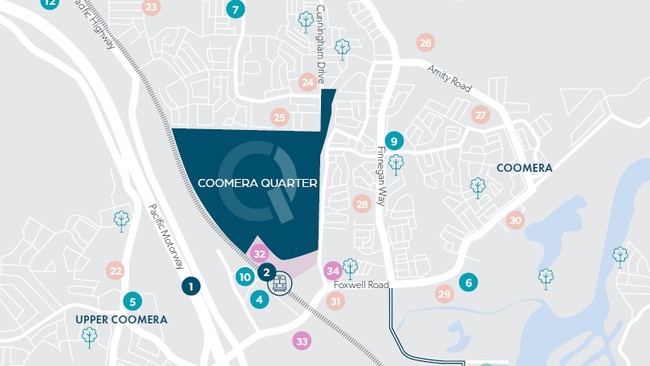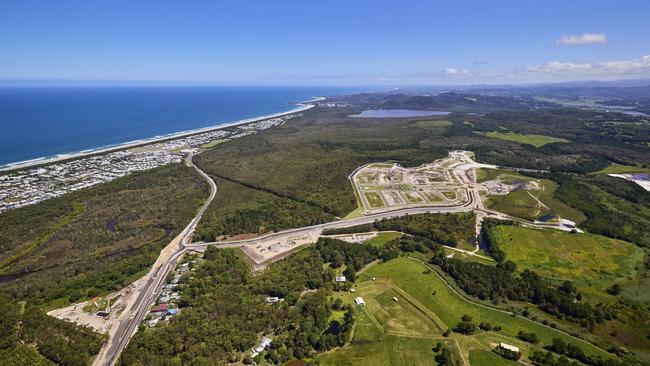10 billionaires tackling Australia’s housing crisis: who’s leading the charge?
At least a dozen members of the Richest 250 control hundreds of thousands of housing lots across the country. So where are all the houses?

Billionaire Bob Ell believes the housing market is the “backbone” of Australia’s economy. Which is why he says there should be wholesale changes to the current planning system that most high-profile developers blame for the housing crisis.
At least a dozen members of the Richest 250 control hundreds of thousands of housing lots across the country, as well as a string of sites earmarked for apartment towers.
They say they want to build – and to make money in the process – but are being held back by slow planning approvals, rising costs, and various hurdles that ultimately mean demand for housing doesn’t get close to being met by supply.
Ell, based on the Gold Coast, says a healthy housing market means jobs, investment and economic stability.
“Housing isn’t just about giving people a place to live, it’s the backbone of Australia’s economy,” he says.
The 2025 edition of The List – Australia’s Richest 250 is published on Friday in The Australian and online at richest250.com.au
“Unlike countries with massive manufacturing or tech industries, Australia’s wealth is built on land, property, and investment in housing. When developers and builders are squeezed out by excessive red tape, skyrocketing costs or policy uncertainty, it chokes supply, pushes up prices and slows down economic growth.”
A variety of solutions are put forward by big-name property developers, including allowing greater density of properties on new estates, approving more build-to-rent apartment blocks, and more prefabrication of houses leading to speedier build times with fewer workers needed on sites.
Ell is the executive chairman of family company Leda Holdings, which is focused on the sale of development properties in NSW, Queensland and the ACT. In recent months he has been a voluble critic on the issues he has faced on the Gold Coast.

Ell’s son, Ron Ell, is the company’s Sydney-based managing director and responsible for its day-to-day running.
However Bob Ell remains very active in the business, and he says putting a stop to so-called “bureaucratic bloat” is what’s needed for the housing crisis to come to an end.
In December, Ell wrote to Prime Minister Anthony Albanese and Environment Minister Tanya Plibersek asking them to remove what he calls federal government “green tape” holding back a giant project he has planned for Coomera on the Gold Coast.
Ell and his son paid about $200m for a huge 161ha parcel of land in April 2023. The site is zoned for 4000 dwellings, and had been given the green light by the Gold Coast City Council. But it requires environmental approvals from both the state and federal governments to proceed due to the presence of a small group of koalas on the site.
“We have an approved site where approximately six koalas are holding up the development of a project that could house 10,000 people,” Ell told The Gold Coast Bulletin late last year.
He said the animals stood a better chance of survival if they were relocated, given the Coomera land is surrounded by urban development and schools.
It is, he says, an example of how better planning processes and what he believes is a more sensible approach by authorities could help ease the housing crisis.
The issues are particularly acute on the Gold Coast, where research by Colliers found only 55 new housing lots were sold across the city in the first quarter of 2024 due to a lack of supply. (About 3000 were sold in a single quarter in 2016, the peak of supply in recent years.)
More recently, Colliers said only 180 new apartments were sold in the third quarter of 2024, the lowest number since 2020.

The lack of new supply has pushed up existing dwelling prices. Data collated by the research firm RPM showed that only 5 per cent of the houses in south-east Queensland sold in the year to November 2024 were at a price deemed affordable for households on the average wage of $1954 per week.
In NSW, Urban Taskforce Australia has called on the state government to amend the “tired, cumbersome and complex” Environmental Planning and Assessment Act, and says the supply of housing should be its main objective rather than stopping development.
Among its recommendations, the taskforce has called for an urgent review of infrastructure fees, taxes and charges, and the establishment of a simple process for a medium-density complying development framework for buildings up to eight storeys high.
“There is [also] an urgent need to review the time-consuming, repetitive and expensive design review process to allow an exemption for applicants who use a top-tier architect,” says the task force’s chief executive, Tom Forrest.
In an interview with The List, Ell calls for the approvals system to be streamlined, citing too many consent authorities (organisations that assess and determine development applications or construction approvals) with differing objectives and competing interests.
Ell also says another change he would like to see is to make complying development “the rule, not the exception”.
“If a project meets the rules, it should be approved, while the default system should be a ‘yes’ not a ‘no’ so that deemed approvals (which if correctly presented are automatically approved if not acted upon by an authority within a certain time) were not stuck in limbo.
“To achieve this, most planning acts around the country need to be either dumped or extensively amended,” he says. “Any act that does not allow performance-led solutions needs to go. Governments should be looking at ways we can use AI in the approval process. If the computer says ‘yes’, let it.”

Last year Ell finally put the first housing lots on the market for his Kings Forest estate on the Tweed Coast, just across the NSW border. The 38 lots released to prospective buyers sold out in just 12 hours.
He has been planning Kings Forest and the neighbouring Cobaki Lakes developments since the 1990s, but experienced years of delays in securing approvals from the NSW government.
The estate, which straddles the Queensland and NSW border, will have about 4500 lots covering 869ha of land that Leda says will one day be home to more than 11,000 people, and include schools, parks and a retail complex.
Ell has long been frustrated about how long the huge project took to bring to market.
“Overregulation and rising construction costs risk making development unviable,” he says. “If we price developers and builders out of the market, we stall the housing pipeline, shrink the economy, and create an affordability crisis that hurts both homeowners and renters.
“The answer isn’t more red tape. It’s cutting delays, unlocking supply, and letting developers do what they do best: build homes for Australians.”
Sydney apartments king Harry Triguboff has long been a critic of council and government planning processes and procedures.

His suggestions range from cutting a requirement for pre-sales on projects to obtain financing; a forced drop in interest rates to stimulate housing demand; and a loosening of bank lending practices – all under a wider plan to be agreed between government, banks, and the construction and housing sectors.
“It [the housing crisis] will eventually get better,” Triguboff says. “But it should not have gotten this bad. The politicians have rules and they stick to them. The rules don’t work in every area, though, and can be good for some projects and terrible for others.
“We all need to get together and work out how we can produce more housing, including looking at where people will buy homes, where the builders can build them, and if the banks will lend.

“There has to be a goal or a target. And I think there will be more apartments because housing is very often in the wrong place. People want to live in apartments. And they are easier to lease, too.”
Triguboff has long had issues with councils in Sydney, where he is critical of the long wait his company, Meriton, has to endure for approvals compared to elsewhere in the country.
“It takes three to four years to get planning approval; it should not take more than six months,” he says, adding that the latter timeline is more typical on the Gold Coast, where he also has projects under development.
Triguboff also says councils should wear the legal and administrative costs if they lose court cases or hearings when they object to development approvals.
“It feels like we have to have endless meetings,” he says. “Every time we speak to the planners or the government, they change things. I don’t understand why. No one who has lived in our apartments has ever complained about how the building looks.”
Melbourne property doyen Max Beck, who formed the Becton development group 50 years ago, says higher density is key for governments to unlock more housing on land earmarked for either housing or apartments.

His family’s Beck Property Group has build-to-rent projects in Melbourne’s Caulfield, which it is developing itself, and plans to build apartments on the Gold Coast.
Beck says build-to-rent – where an entire apartment block is built specifically for units to be rented out – is an important, albeit relatively small, section of the housing market that should become increasingly popular with both developers and consumers.
But more importantly, he adds, housing projects across land on city fringes also need to be undertaken at higher density.
“If you’re in the city and in well-located suburbs then projects should have more density, and that can include build-to-rent,” Beck says.
“But what I really think we should also see is more density in broadacre projects with the consideration of, for example, row houses (which are uniformly laid out side by side), like they have in England. That way you cut down on the construction costs and potentially you need fewer people onsite too, because finding workers is a real issue for the construction industry at the moment.
“You can have two-storey houses, with three bedrooms up top and entertainment and living below. Do it cheaper and do it quicker.
“The demand for housing is clearly there, and governments really need to look at how they can help industries find efficiencies so we can start building to meet that demand.”





To join the conversation, please log in. Don't have an account? Register
Join the conversation, you are commenting as Logout